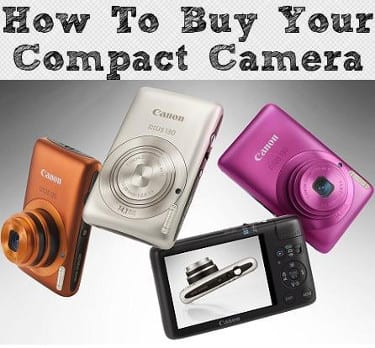
In the largest segment of the digital camera market, point-and-shoot models are compact, easy to use and affordable cameras that generate high quality images with minimum of effort. Just press the shutter button, and left all the other things to your smart snapper because your compact camera automatically adjusts aperture, shutter speed, focus, light sensitivity and ISO settings to capture a clear and crisp image with optimal colour contrasts. Point-and-shoot cameras can often fit into your pocket due to their small size, and are typically less expensive than the DSLR’s.
Make a decision to buy a point-and-shoot camera is the quiet simple task but while its turn to select in between hundreds of models with varying price and features it seems complicated. Here we are providing you some of the tips that make it easy to select your best compact camera.
Lens Focal Length along with Zoom Factor:
The zoom range of camera is represented by “X” that shows how far object your camera zoom can capture. The focal length range that is represented as a 35mm equivalent value, tells you about the field of view that the camera is able to cover. Always select the cameras with more than 35mm focal length equivalent if you are looking a camera to capture family photographs because it is not possible to frame your family photographs with less focal length.
Camera Sensor Size:
The Sensor size of camera highly effects its performance. If you just focus on the mega-pixels with small sensor size it effect the camera’s low-light shooting performance. These sensors are much smaller than those found in D-SLRs, which can make color gradations less smooth, and make it more difficult to create a depth of field view.
Give priority to features in comparison to weight:
Although compact body and pocket-able size is most highlighting feature of any point-and-shoot camera but always prioritize the features. Because the tiny size camera lack a long zoom and other advance features to make it slim.
Low – Light Performance:
The low – light performance of any compact camera decides that how it will perform in low light settings. In normal setting the noise level increases while you set your camera to high ISO settings that make grainy photographs. As a solution you should look for a camera that performs better at high ISO levels.
Image stabilization:
For the high quality professional photographs Optical Image Stabilization is necessary that control the effect camera shake in photographs other wise you have to plan your shooting always on tripod.